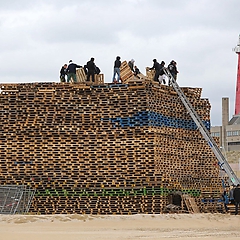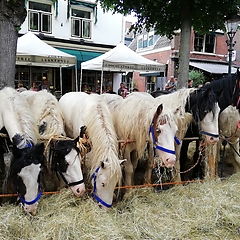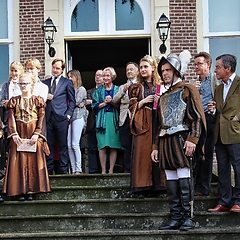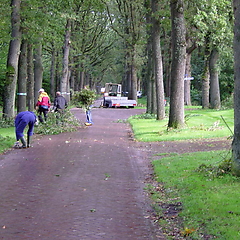The culture of travelers is a culture of survival. Because of the travelling ban, the travelers can no longer move through the country with their caravans. These now look almost like ordinary houses. The travelers feel at home if their caravan has no foundation, is not a stone terraced house and has a floor that lies above ground level, with an entrance step by the front door. Still the travelers, including the ones who live in a stone house, have their own way of thinking and their own culture. The travelers’ culture is a form of intangible cultural heritage that is closely connected with the cultural identity of the travelers in the Netherlands. With regard to this culture one can say that the feeling of living in a caravan has remained. In the caravan strict rules are applicable with regard to hygiene. No shoes are worn indoors. One never washes one’s hands in the sink. The culture is strongly defined by social cohesion and family bonds, which is expressed in a number of phenomena. Families live closely together. Children are named after grandparents and nicknames are used. There is a very hospitably eating culture. A visitor always gets food and drinks and there are no fixed hours for meals. The strong mutual bond is also shown in life cycle rituals. The First Communion is always a big feast. Before marriage there is the tradition of running away together of a boy and a girl. There are special funeral customs too. With regard to work it is a rule that travelers traditionally practise crafts and itinerant professions. Working for a boss conflicts with the urge for freedom and the sense of self-esteem.
Description
Community
The travelers’ culture in the Netherlands is supported by some thirty thousand people with ‘travellers blood’. There are altogether 1150 halting sites. The Vereniging Behoud Woonwagencultuur in Nederland (Society for the Preservation of the travelers’ Culture in the Netherlands) was especially established with the objective to safeguard the travelers’ culture as intangible cultural heritage. The General Dutch Union for travelers also works for the caravan dwellers. Several groups are active on Facebook.
History
For ages people have been travelling from one place to another for their profession, while staying in inns or sheds. By improving roads, villages and towns became more accessible in the second half of the nineteenth century. It was easier then to move around with a wagon. Caravans developed from wagons that were taken along by the travelling population. The wagons were now covered with sailcloth and pulled by horses. Thus it became possible to travel familywise. In the twentieth century the group name ‘travelers’ came in vogue, distinguishing them from Sinti and Roma, who had their own history, which goes much further back. In 1918 the Caravan Law was introduced. It regulated the caravan as well as its residents and was intended to diminish the growing number of caravans and put an end to the freedom to put them anywhere one wished. In World War II travelling was completely prohibited. After the liberation, the policy was directed at concentration of the caravans by putting up regional halting sites. Because of the concentration in large sites, the travellers were less and less able to practice their original professions. In 1977 the government policy was changed to ‘de-concentration’: smaller sites, with ten to fifteen caravan places. In 1998 the Caravan Law was abolished. The culture of the ‘travellers’ is no longer protected by law. Momentarily many municipalities conduct a ‘dying-out policy’. When residents die, the caravan place disappears.



